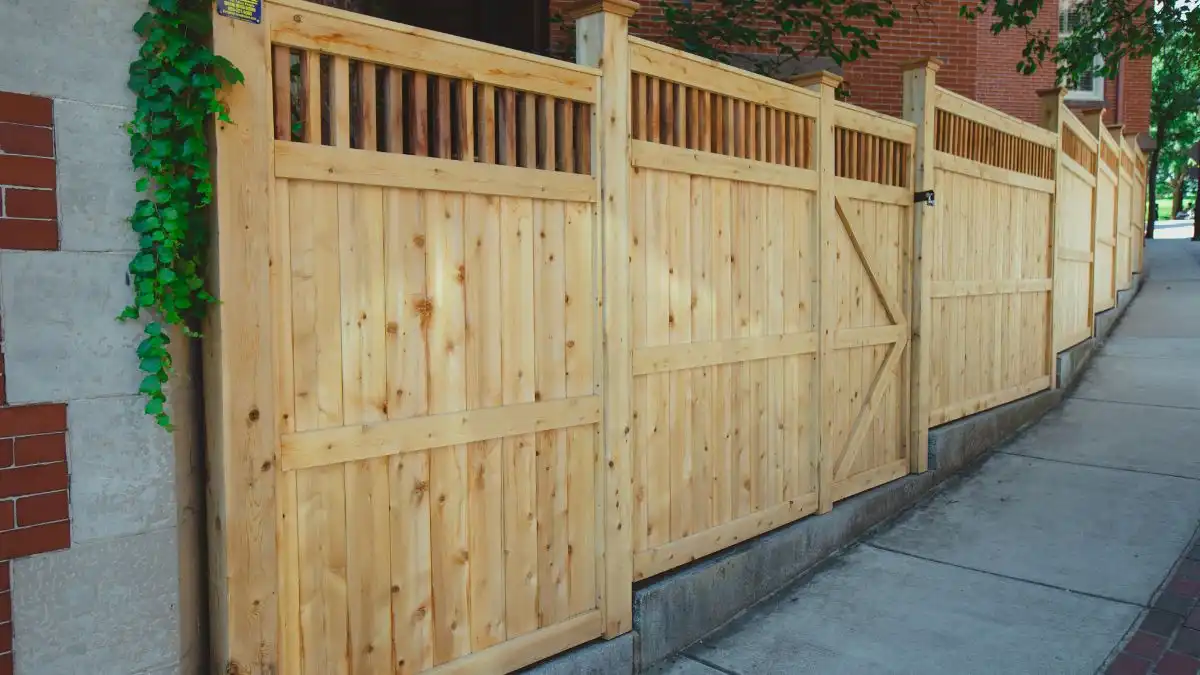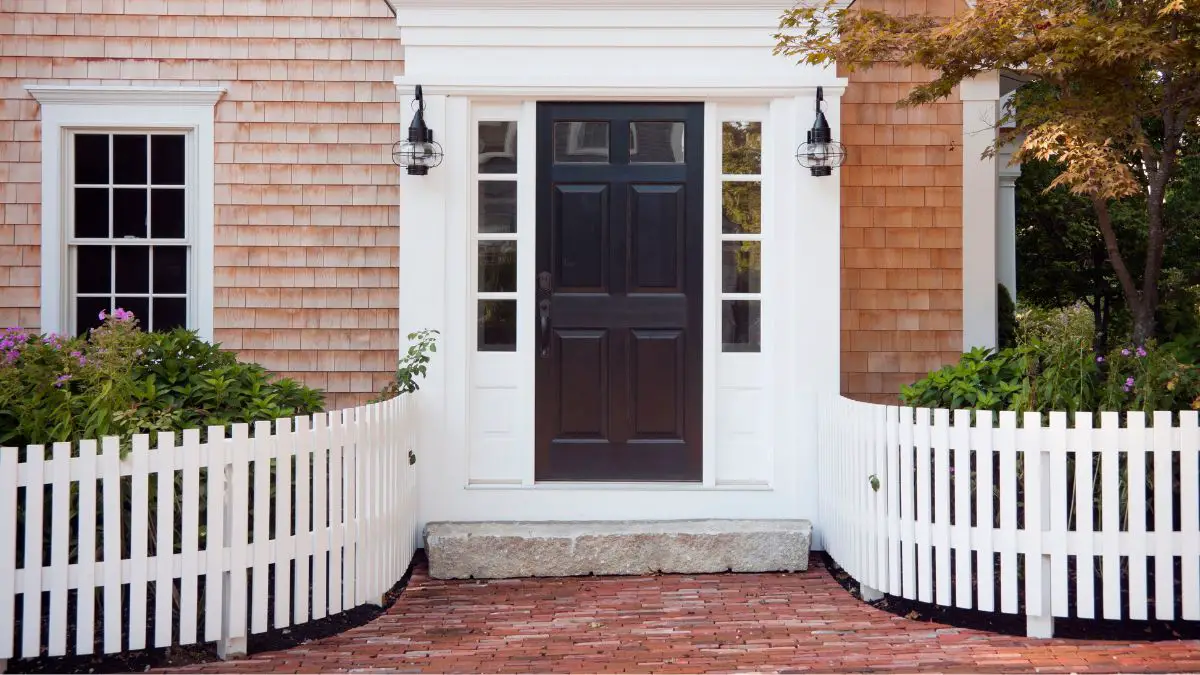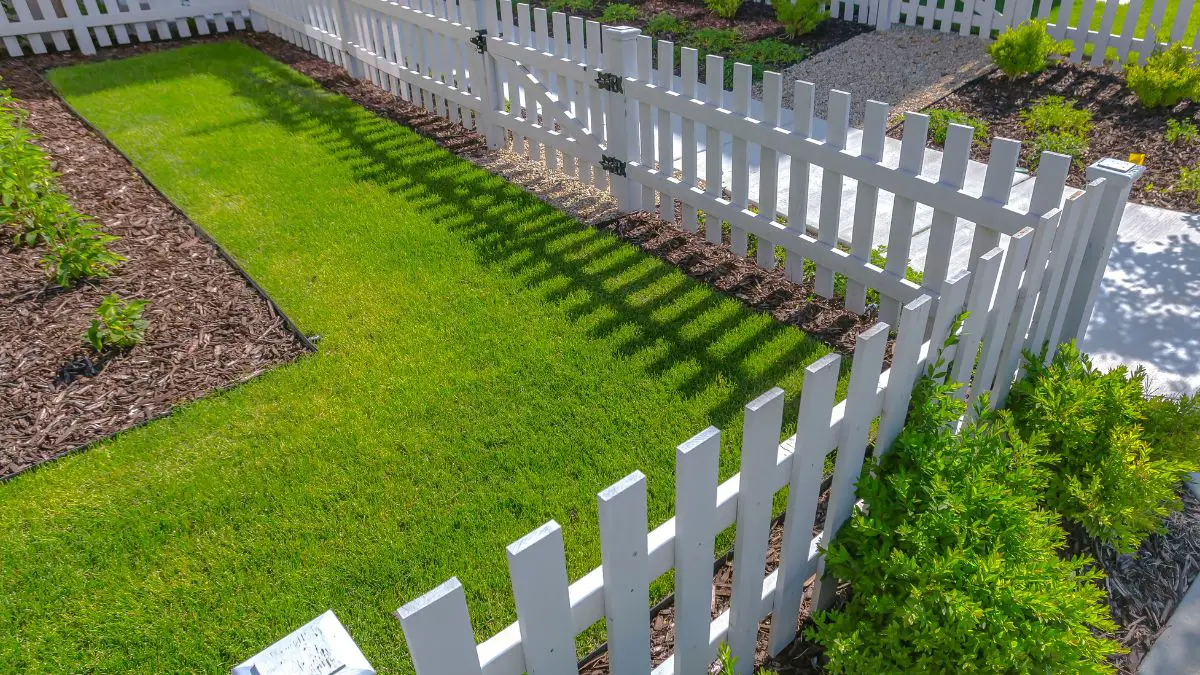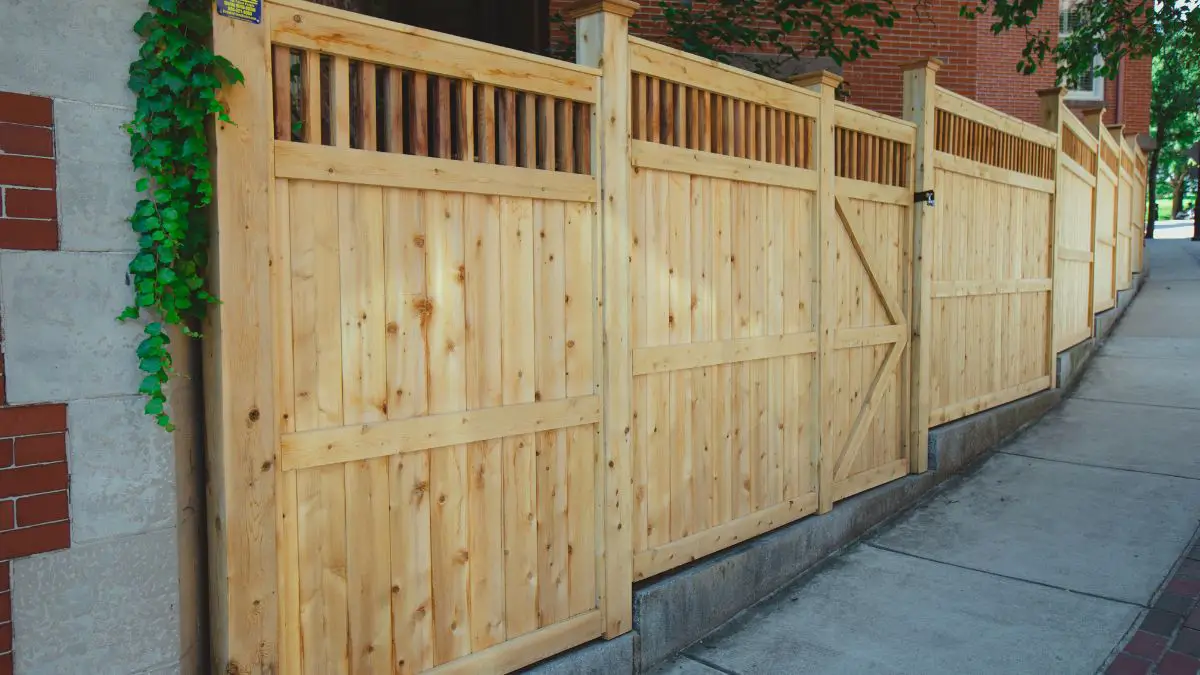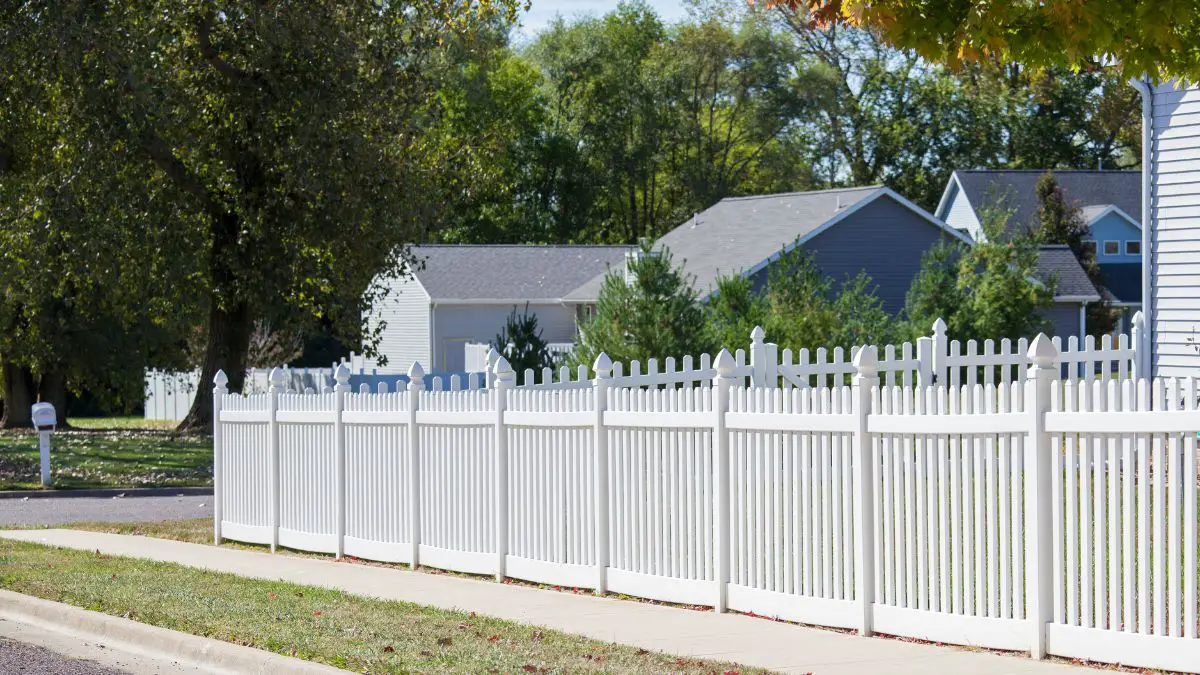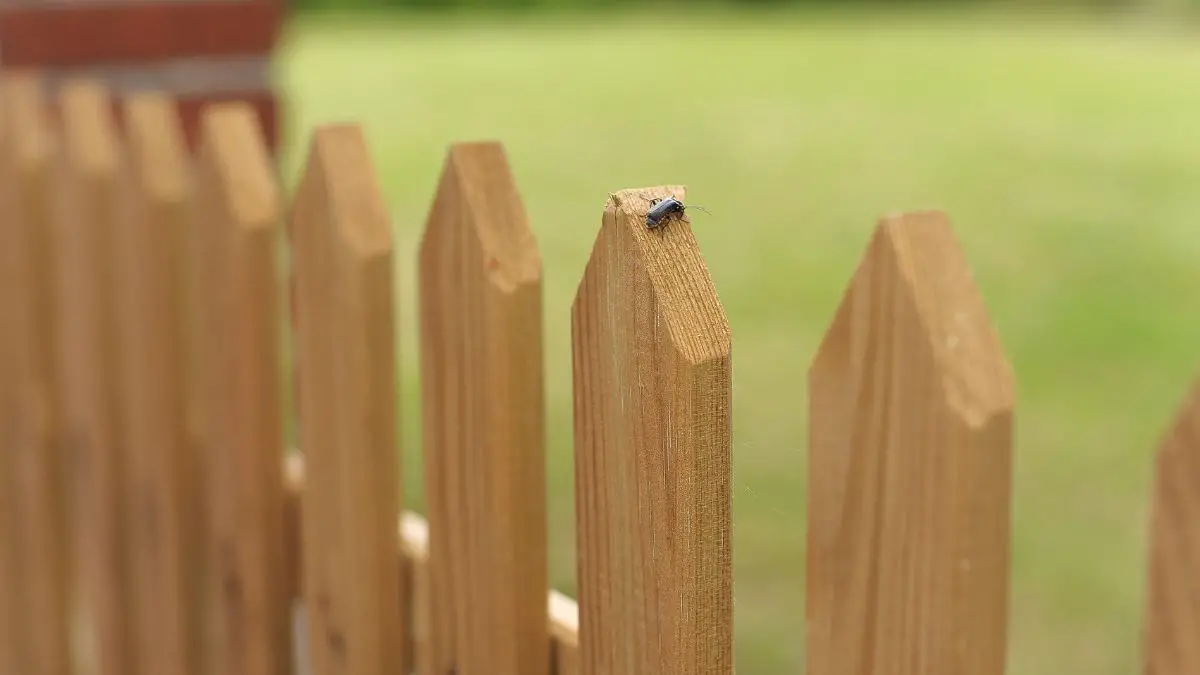Each has advantages and cost factors when considering the cheapest fence material among wood, chain link, and vinyl. Here’s a detailed comparison based on the provided information:
Wood Fencing
- Treated Pine: Treated pine is noted for being the most affordable and durable wood option for fencing. It’s popular due to its low cost and the treatment it undergoes to resist rot and pests, making it a long-lasting choice.
- Cedar: Cedar is a pricier option than treated pine but is valued for its natural resistance to rot, decay, and insects without chemical treatment. It also has a distinct appearance and aroma.
- Cost Considerations: The cost of wood fencing can vary significantly based on the type of wood, with treated pine being the most economical. Wood fencing also requires maintenance, such as staining or painting, to prolong its life.
Chain Link Fencing
- Material Cost: Chain link fencing is known for its affordability and durability. It’s a practical choice for residential and commercial properties, offering security without obstructing views.
- Installation and Maintenance: Chain link is relatively easy to install and requires minimal maintenance, making it a cost-effective option over time. The price can vary based on the height and coating of the mesh.
Vinyl Fencing
- PVC Fencing: PVC or vinyl fencing is highlighted as the cheapest way to create a fence, substituting wooden pickets and stakes to offer protection. It’s known for its durability, low maintenance, and ease of installation.
- Strength and Aesthetics: Vinyl is at least five times as strong as wood and offers greater flexibility. It’s available in various styles and colors, including options that mimic the look of wood without the maintenance.
- Cost Factors: While the initial cost of vinyl fencing can be higher than some wood or chain link options, its longevity and minimal upkeep can make it a more economical choice in the long run.
Get FREE quotes from local fence contractors in your area today. Whether you need wood, vinyl, or metal fencing - We Can Help! All Contractors are screened, licensed, and insured.
Types of Affordable Fencing Materials
Wood Fencing
A wooden fence comes to mind when you think of a classic, picturesque fence. Wood fencing is a traditional choice that offers a range of styles of fence, from picket fences to privacy fences. It’s a versatile option that can be painted or stained to match your home or landscaping design.
In terms of average cost, wood fencing can be quite budget-friendly, depending on the type of wood you choose. For instance, treated pine is typically more affordable than cedar or redwood. You can expect to spend between $7 and $15 per linear foot for materials.
Keep in mind, though, that the cost can vary based on factors like the height of the fence, the complexity of the design, and local labor rates.
Pros of Wood Fencing
- Wood fences have a natural, timeless beauty that can enhance the curb appeal of your home.
- With a variety of styles and finishes available, wood fences can be customized to suit your aesthetic preferences.
- Wood fences, especially those that are tall and without gaps, offer excellent privacy.
Cons of Wood Fencing
- Wood fences require regular maintenance, including painting or staining, to keep them looking their best and to protect against weather damage.
- While wood is a sturdy material, it can be susceptible to issues like rot, insects, and warping over time.
Picket Fences
The quintessential symbol of the American dream, a wood picket fence, typically costs between $1,500 and $2,100. The average expenditure falls around $10 to $14 per foot. Fence panels, available in various materials, make installing a charming picket fence around your yard quick and straightforward.
Vinyl Fencing
Moving on to vinyl fencing, this modern, low-maintenance option has recently gained popularity. Vinyl fences offer a clean, sleek look in various styles, including picket, privacy, and decorative.
Vinyl fencing costs typically higher than wood, with average prices ranging from $20 to $40 per linear foot for materials. However, vinyl can be a cost-effective choice in the long run when you factor in the low maintenance requirements.
Pros of Vinyl Fencing
- Vinyl fences require little maintenance, just an occasional wash to keep them looking fresh.
- Vinyl is resistant to many of the issues that can affect wood, such as rot, insects, and warping.
- With proper care, a vinyl fence can last for decades, making it a good long-term investment.
Cons of Vinyl Fencing
- The upfront cost of a vinyl fence is higher than some other options, although this can be offset by lower maintenance project costs over time.
- Vinyl fences are typically available in fewer colors than wood, and they can’t be painted or stained.
Metal Fencing
Finally, let’s talk about metal fencing. This category includes many options, from sturdy and economical chain-link fences to stylish and durable corrugated metal fences.
The cost of metal fencing can vary widely based on the type of metal and the style of the fence. For example, chain-link fencing is one of the most affordable options, often costing less than $10 per linear foot for materials. On the other hand, a corrugated metal fence can cost $15 to $30 per linear foot.
Pros of Metal Fencing
- Metal fences are extremely durable and can withstand harsh weather conditions.
- Metal fences, particularly those with pointed tops, can provide a high level of security.
- Metal fences require little maintenance and can last for many years.
Cons of Metal Fencing
- Unless you add privacy slats, chain-link fences offer little privacy.
Wire Fencing
Wire fencing installation typically ranges from $1 to $7 per linear foot, translating to an approximate total of $1,300 to $5,900 per acre, contingent on the type of wire used. Popular choices such as barbed, hog, and woven wire average around $2 per linear foot for installation.
Wood, vinyl, and metal are affordable fencing materials with advantages and disadvantages. Your choice will depend on your specific needs, preferences, and budget. Whether you’re looking for a traditional wood fence, a low-maintenance vinyl fence, or a durable metal fence, there’s a cost-effective option out there for you.
DIY Affordable Fencing Ideas
Pallet Wood Fence
Have you ever thought about repurposing pallets into a fence? Pallet wood fences are a fantastic, eco-friendly option that can save money while adding a rustic charm to your property.
A pallet wood fence is incredibly affordable, primarily if you can source the pallets for free. Many businesses are happy to give away their used pallets, so it’s worth asking. If you need to buy pallets, they’re usually relatively cheap, often less than $10 each.
Simple Guide to Building a Pallet Wood Fence:
- Collect Your High-Quality Materials: You’ll need pallets, of course, as well as a post-hole digger, concrete mix, screws, and a drill.
- Prepare the Posts: Dig holes for your posts, ensuring they’re deep enough to hold them securely. Place the posts in the holes and fill them with concrete, then allow the concrete to set.
- Attach the Pallets: Once the fence posts are secure, you can start attaching the pallets. Screw each pallet into the posts, making sure they’re level.
- Finish Your Fence: You can leave the wood natural or paint or stain it to match your home.
Wattle Fencing
Wattle fencing is another DIY project or idea that’s both cost-effective and attractive. It’s a traditional English style that uses woven wood branches to create a sturdy, eco-friendly fence.
The cost of a wattle fence can vary depending on the type of wood you use. You can make a wattle fence for next to nothing if you can access suitable branches. If you need to buy the branches, the cost will be higher, but still quite affordable.
Here’s How to Build a Wattle Fence:
- Gather Your Materials: You’ll need flexible branches, saplings, and sturdy posts.
- Install the Posts: Dig holes for your posts and secure them with concrete.
- Weave the Wattle: Start at one end and weave the branches or saplings in and out of the posts. Continue until you reach the desired height.
- Secure the Wattle: Use wire or twine to tie the ends of the branches to the posts.
Chicken Wire Fencing
Let’s consider chicken wire fencing. This is an excellent option if you’re looking for a functional, budget-friendly fence to keep pets or livestock contained.
Chicken wire fencing costs relatively low, with chicken wire typically costing less than $1 per linear foot. You’ll also need posts and staples or ties to secure the wire to the posts.
Step-By-Step Guide to Building a Chicken Wire Fence:
- Collect Your Materials: You’ll need chicken wire, posts, and wire ties or staples.
- Install the Posts: Dig holes for your posts and secure them with concrete.
- Attach the Chicken Wire: Unroll the chicken wire and attach it to the posts using the wire ties or staples. Make sure the wire is taut.
- Secure the Bottom: If you’re trying to keep animals in or out, bury the bottom of the fence in the ground.
With these DIY fencing ideas, you can create a functional and attractive fence without breaking the bank. Whether you choose a pallet wood fence, a wattle fence, or a chicken wire fence, you’ll add a personal touch to your property while saving money.
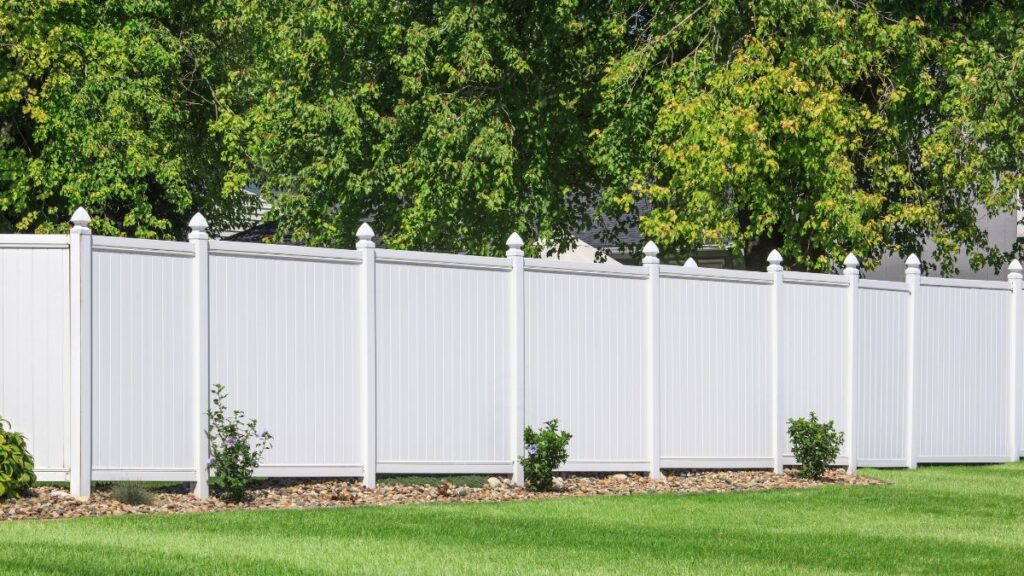
Comparative Analysis of Fencing Materials
Choosing the right fencing material for your property is a significant decision. It’s not just about picking the most affordable option; it’s about finding the best value for your investment. Compare wood, vinyl, and metal fencing based on cost, durability, maintenance, and aesthetics.
Cost
When it comes to cost, each premium material has its range:
| Fencing Material | Cost per Linear Foot | Additional Information |
|---|---|---|
| Wood Fencing | $7 to $15 | An affordable option, the cost is influenced by wood type and design complexity. |
| Vinyl Fencing | $20 to $40 | More expensive but low maintenance for long-term cost-effectiveness. |
| Metal Fencing | Less than $10 to $15 to $30 | Cost varies based on the type: chain-link fencing is cheaper, and corrugated metal fencing is more expensive. |
Durability
Durability is another crucial factor to consider:
- Wood Fencing: While wood is a sturdy material, it can be susceptible to issues like rot, insects, and warping over time.
- Vinyl Fencing: Vinyl is resistant to many problems affecting wood, making it a durable choice. With proper care, a vinyl fence can last for decades.
- Metal Fencing: Metal fences are highly durable and withstand harsh weather conditions. They’re a great choice if you’re looking for a fence that will stand the test of time.
Maintenance
Maintenance requirements can also impact your choice:
- Wood Fencing: Wood fences require regular maintenance, including painting or staining, to keep them looking their best and to protect against weather damage.
- Vinyl Fencing: One of the main advantages of vinyl fencing is its low maintenance requirements. An occasional wash is all it takes to keep a vinyl fence looking fresh.
- Metal Fencing: Like vinyl, metal fences require little maintenance, making them a convenient choice for busy homeowners.
Aesthetics
Finally, aesthetics play a significant role in choosing a fencing material:
- Wood Fencing: Wood fences have a natural, timeless beauty that can enhance your home’s curb appeal. They offer a variety of styles and finishes, allowing for a high degree of customization.
- Vinyl Fencing: Vinyl fences offer a clean, modern look. They’re available in various styles but can’t be painted or stained, limiting customization options.
- Metal Fencing: Metal fences range from utilitarian (like chain-link fences) to stylish and contemporary (like corrugated metal fences). However, some people find them too industrial for residential use.

Factors Influencing the Cost of Fence Construction
The expense associated with fence construction can significantly vary based on several factors:
Front Yard vs. Backyard Fencing
Typically, homeowners prefer fencing their backyards as it’s a space for children to play, pets to roam, and a place where privacy is often desired, especially if there’s a pool or hot tub. Backyard fences are usually 6 to 8 feet tall, with wood pickets being popular.
On the other hand, front yard fences are often more decorative, enhancing curb appeal. They’re usually 3 to 4 feet tall and are integral to a landscaping plan.
Extra-Long or High Fence Costs
The cost of an extra-long fence increases proportionally with the number of boards required. For instance, a 500-foot-long cedar fence could cost between $6,300 and $9,300.
An extra-high fence also incurs additional costs. Standard fence boards come in 6- and 8-ft heights and custom-cut 10′ boards can add an extra 20% to 30% to your bill. Check local zoning laws and HOA guidelines for fences exceeding the standard 6-foot height.
Permits
Depending on your location, a fence permit could cost between $25 and $50. Usually, fences under 6 feet tall don’t require a permit, but it’s always wise to check with your local planning and zoning office or HOA.
Utilities
Before digging any holes, always contact your local utility companies. They can mark utility lines, usually free of charge. Ignoring this step could lead to expensive repairs.
Grading
Depending on the size and slope, leveling a yard can cost between $500 and $5,000. If you’re building a fence on a slope, you might need to level it first. If not, you’ll have to use fence pickets or boards, as fence panels won’t work on a slope.
Ground Conditions
Rocky or soggy soil can increase the labor costs of installation due to the additional effort or equipment required.
Job Complexity
Straight lines are the cheapest way to build a fence. A square or rectangular fence with many corners and obstacles will cost less than one. Each corner post and turn adds to the labor and cost of materials.
Gate Costs
The typical type of gate installation ranges between $150 and $500 per gate. Gates can be both functional and decorative. DIY options range from a 4’ x 4’ chain link gate for $60 to a decorative 4’ x 4’ black-painted aluminum metal fence gate for $350.
Advantages and Disadvantages of Installing a Fence
Advantages
- Safeguard your belongings, children, and pets.
- Deter intruders or wild animals.
- Provide a windbreak.
- Enhance privacy.
- Reduce street noise.
- Boost your property’s value.
- Ensure safety around pools and hot tubs.
- Define your property boundaries.
- Improve curb appeal.
Disadvantages
- The cost of a fence might exceed your budget.
- Maintenance will likely be required over the years.
- Landscaping tasks like trimming and mowing become more challenging around a fence.
- Disagreements may arise if your neighbor opposes the fence.
Estimating Your Fencing Costs
Several fencing companies offer online tools on their websites that can provide an estimated cost for your fence based on your specifications. Alternatively, you can estimate the cost manually.
Start by taking accurate measurements of the area you want to fence. Hire a land surveyor, which typically costs around $350.
Estimate the number of corner and line posts needed, decide on the width of the gate and the type of hardware, determine the height of the fence, and choose a fencing material that fits your budget.
For a more accurate estimate, consider contacting a fence installation company. It’s advisable to get at least three estimates from different companies. Don’t automatically opt for the lowest bid; consider the quality of common materials and workmanship.
Frequently Asked Questions
What is the least expensive fencing material?
Chain-link fencing is often the least expensive option. It’s durable, secure, and very cost-effective. However, it doesn’t offer much in terms of privacy or aesthetics. Wood fencing is another affordable option if you’re looking for a balance between cost and appearance.
Is a wood fence cheaper than PVC?
A wood fence typically costs less than a PVC or vinyl fence. Wood fences require more maintenance, adding to their overall cost over time. Vinyl fences have higher initial costs but require less maintenance, making them more cost-effective in the long run.
What is the cheapest fence material in 2023?
As of 2023, chain-link fencing remains one of the cheapest materials. However, prices can vary based on factors like the quality of the material and local labor costs. Getting quotes from several providers is always a good idea to ensure you get the best deal.
What is cheaper than a wood fence?
Chain-link and certain types of metal fencing typically cost less than wood. However, don’t forget to consider factors like installation costs and maintenance requirements, which can impact the overall cost of your fence.


